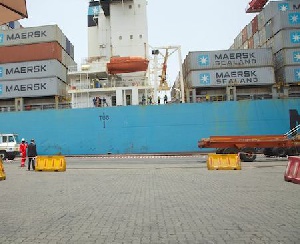The Ghana Ports and Harbours Authority (GPHA), operator of the country’s seaports, has installed electronic gates at the entry and exit points of the Tema Port as part of efforts to improve security within the port community.
The e-gate systems consist of turnstiles and speed stiles, boom barriers and an optical character recognition camera that will capture every transaction and movement within the port.
This move forms part of an aggressive drive on the part of the Authority to extensively deploy electronic port management infrastructure the secure transactions as well as protect the interest of stakeholders who do business with the port.
The electronic port management system will help management of the port to address the issues of corruption, extortion, petty thievery as well as other unethical practices that dents the image of the ports in the public domain.
The system is also expected to significantly improve the processes as well as the cost that are incurred by the shipping public.
Marketing and Public Relations Manager of Tema Port, Paul Ansah Asare, said: “These are part of measures aimed at making the Tema and Takoradi ports the first electronic ports in the entire West African sub-region.
“The e-gate system will address the complaints of pilfering and other negative activities because now every movement will be closely monitored to improve the level of security in the port area.”
GPHA’s IT Manager, David Boison, said the introduction of the electronic management systems will help to de-congest the port as the operator will now be able to check the movement of trucks and persons in and out of the port area.
He said the system will also capture whatever happens at the port at any time of the day and for that matter security will be improved significantly.
“The new electronic systems will help to create space at the port for business because only persons whose data are stored in the system will be able to enter the port.
“With all these systems, the issues of cargo diversion will be a thing of the past as the movement of cargo trucks in and out of the port will be monitored by the GPHA.
About 4000 agents have already been registered biometrically to enable them access the electronic gate system.
Aside dealing with congestion, eliminating pilfering and associated business risks, the electronic gate system will help to put stowaways in check as the system will be able to track persons that have been in the port area for more than 24 hours.
“All persons who enter the port are not allowed to stay in for more than 24 hours; the system will be able to identify those that have swiped out and those that are still in the port and so stowaways will be tracked,” Mr. Boison added.
Click to view details



Business News of Saturday, 29 August 2015
Source: B&FT
GPHA boosts port security with e-gates
Entertainment
















